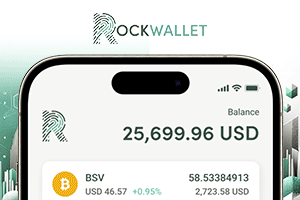|
Getting your Trinity Audio player ready...
|
The Coinbase (NASDAQ: COIN) digital asset exchange is rolling in cash as memecoins soar and crash, but its reliance on utility-free casino chips doesn’t bode well for its long-term future.
Figures released February 13 show Coinbase’s revenue in the final three months of 2024 came to just under $2.3 billion, an 88% rise from its Q3 revenue and a 140% rise from Q4-23. Coinbase booked a nearly $1.3 billion profit in Q4, nearly 5x its bottom line in the same quarter one year prior.
For the year as a whole, revenue more than doubled to $6.3 billion, while profit came just under $2.6 billion, an exponential improvement over the $95 million profit the company booked in 2023.
The figures require a little asterisking, as Coinbase adopted new accounting rules in Q1-24 that allowed it to record mark-to-market gains in the value of the digital assets on its balance sheet. So, while the figures remain impressive, the percentage gains are a little apples-to-oranges.
Digging deeper, we find Q4 transaction revenue of $1.55 billion, nearly triple Q3’s sum, reflecting the excitement that gripped the overall ‘crypto’ market as then-candidate Donald Trump embraced digital assets and then proceeded to win the White House, portending a radically different approach to digital assets at the federal government level.
Consumer transaction revenue totaled $1.35 billion on volume of $94 billion, both figures nearly tripling their Q3 totals. Institutional trading showed similar quarter-on-quarter improvements, with revenue of $141.3 million on volume of $345 billion.
Revenue from transactions on Coinbase’s Ethereum ‘layer 2’ network Base came to $67.6 million, an all-time high, although gaining at a slightly slower pace than the consumer/institutional categories. To fuel adoption, Coinbase has been effectively subsidizing transaction fees on Base, where it remains the sole ‘sequencer’ handling transactions, despite vague promises of allowing other sequencers “over time” that, like all mirages, never seem to get any closer.
Coinbase’s monthly transacting user (MTU) count hit 9.7 million in Q4, up from 7 million in Q4 2023. For the year as a whole, the gains were a little more modest, rising from 1 million to 8.4 million. For the record, Coinbase views ‘transaction’ through an extremely broad filter, including customers who passively receive payments from assets staked on the platform, as well as those who simply withdraw funds.
Coinbase’s ‘stablecoin revenue’ category fell 8.5% quarter-on-quarter to $226 million. This category is wholly based on USDC, the second-largest stablecoin issued by Circle via a Coinbase partnership.
Blockchain rewards (aka revenue from staking ETH to support Ethereum’s proof-of-stake consensus mechanism) rose 39% to $215 million. Interest on the Treasury bills Coinbase buys with the cash provided by staking customers was basically flat at $65.7 million, while custodial fee revenue rose by more than one-third to $43 million.
Utility-free tokens now half of transaction revenue
As for specifics of what all those Coinbase transactors were up to, the BTC token accounted for 27% (-10 points from Q3) of Q4’s trading volume and 27% (-8 points) of transaction revenue. ETH saw its volume share fall five points to 10% while revenue was down 6 points to 10%.
The Tether (USDT) stablecoin’s share of trading volume held steady at 15%. Oddly, Coinbase has yet to cite any similar stats for USDC, apparently because nobody is using it to trade with on the exchange.
The ‘other crypto assets’ category shot up a hefty 15 points to 48% of total volume. This category accounted for 49% of transaction revenue, 11 points higher than Q3.
The ‘other assets’ surge reflects the explosion of utility-free memecoins issued since last year’s launch of the Pump.fun token-generating platform. But it also reflects Coinbase’s post-election decision to throw caution to the wind and just start listing tokens it likely knows are illegal securities, but with the understanding that the Securities and Exchange Commission’s (SEC) new leadership has decided enforcing the rules is somebody else’s job.
Interestingly, while most memecoins are issued on the Solana network, revenue from SOL transactions dipped below the 10% reporting threshold in Q4 after hitting 11% in Q3. At the same time, revenue from trading Ripple Labs’ XRP token hit a 14% share after previously failing to cross that 10% threshold.
Coinbase has been publicly shamed for its reliance on utility-free tokens that are effectively chips in its crypto casino, lacking any purpose beyond financial speculation. This view is compounded by CEO Brian Armstrong’s recent proposal to abandon all vetting of tokens and simply listing everything, with a half-baked pledge to purge blatant scam tokens after the cows have bolted this barn.
Money for nothing and your servers for free?
Despite its outsized profits, Coinbase somehow can’t find the funds required to shore up its shaky infrastructure. For the record, Coinbase doled out $222 million in stock-based compensation in Q4—$913 million for the full year—and expects to issue another $206 million in the current quarter. Imagine how much better Coinbase’s user experience would be if its execs were willing to go three freaking months without suckling on those sweet, sweet compensation teats.
Looking forward, Coinbase says Q1-25 has started strong, with transaction revenue hitting $750 million in the year-to-date to February 11. Investors, who’d pushed the company’s share price up nearly 8.5% before the markets closed Thursday, appeared underwhelmed by Coinbase’s figures, nudging the shares down 1.5% in after-hours trading.
Investors appear to believe that, despite all the hoopla over America’s regulators basically abdicating their oversight responsibility, the past quarter’s token price surges may have been ‘baked in,’ raising questions as to what might drive new speculative frenzies or whether they’re even possible.
List every token, take every bet
On the ensuing analyst call, Armstrong was asked about his plans to throw caution to the wind by listing every token in existence, even as he acknowledged that the rate of issue was now around “one million tokens per week.” Armstrong rationalized this by comparing it to a Google search that delivers 100,000 results for a particular query, “but you only view the first page.” Yes, and if clicking on any of those links means you can’t make rent this month, well, freedummmmmmm!
Armstrong revealed Coinbase’s aspirations to become “the primary financial account for many people in the global economy.” Indeed, Armstrong has been tweeting his company’s resemblance to a traditional bank, claiming that its assets under management “would make us 21st largest bank in the US by total assets, and growing.”
In Armstrong’s vision of the future, “you will have a single primary financial account which serves” all financial functions, ushering in “greater economic freedom for all,” and probably more $133 million mansions for your big buddy Bri. Never mind that all Coinbase has to offer are different ways to bet your cash on an endlessly replenishing supply of magic beans and/or digital Beanie Babies.
Interestingly, Armstrong appeared to suggest that Coinbase was interested in getting in on the burgeoning ‘prediction market’ business staked out by U.S.-based Kalshi and the internationally-licensed Polymarket. The Commodity Futures Trading Commission (CFTC), which previously litigated against Polymarket, is now under new leadership and has scheduled a meeting to discuss whether U.S.-based operators might join in on the pseudo-betting fun.
Masters of the universe with hats in hand
The night before Coinbase released its earnings, TechCrunch reported that the company was “working on its reentry to India,” the market from which it made an ignominious retreat three years ago. Coinbase is reportedly “engaging” with Indian authorities, including the Financial Intelligence Unit (FIU), which memorably called bullshit on Coinbase’s bluster about its freedom to do what it liked in the country.
In 2022, Coinbase was riding high, fresh off its listing on the Nasdaq exchange the previous year and reaping all the financial benefits of the last speculative bull market. Embracing the ‘move fast and break things’ ethos, Coinbase launched its Indian-facing operation with the unfounded claim that local customers could use the state-run Unified Payments Interface (UPI) to fund their accounts.
The National Payments Corporation of India (NPCI) pushed back hard on this claim, forcing Coinbase to publicly acknowledge that, no, it hadn’t been granted permission to use UPI. Having started its Indian adventure off with that faux pas, it was downhill from there, and Coinbase ditched the market entirely later that year.
It’s unclear when Coinbase might resume its India-facing operations, as rival exchange Binance did after (a) paying a $2.2 million penalty for anti-money laundering shortcomings, and (b) not yet paying an $86 million back tax bill the country’s Directorate General of GST Intelligence claims Binance owes.
Whenever it resumes operations, Coinbase will be—or at least, should be—minding its P’s and Q’s, mindful that another presumptive screwup won’t be viewed charitably. Coinbase’s chief legal officer Paul Grewal just joined the board of the U.S.-India Business Council, where you can be sure he’ll be adopting a far less strident/privileged tone than he does when discussing U.S. authorities.
While Coinbase was releasing its Q4 results, Indian Prime Minister Narendra Modi was meeting at the White House with President Trump. Given the tens of millions of dollars that Coinbase contributed to securing Trump a second term in office and Armstrong’s reported one-on-one talks with Trump, perhaps Donald whispered a word in Modi’s ear regarding how generous crypto operators can be when they really want something.
Watch: Teranode is the digital backbone of Bitcoin

 08-23-2025
08-23-2025 





